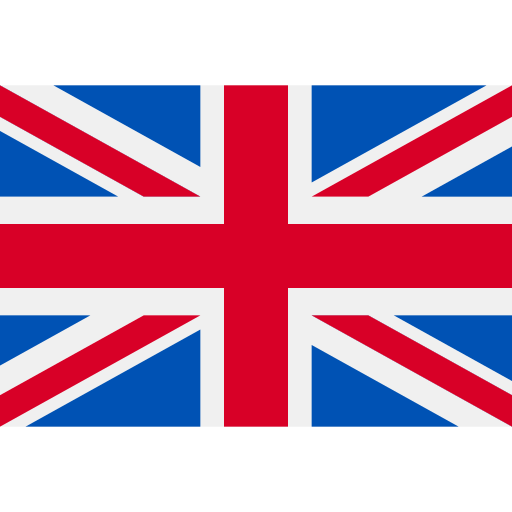Unprecedented 30-day shutdown of Orange Line underway
[ad_1]
Gates are closed, doors are locked and passengers are being directed to shuttle buses instead of train platforms. The MBTA’s 30-day shutdown of the Orange Line began Friday night. Officials say they can squeeze work that would have normally taken five years into the month-long work period. Planned projects include track repairs to eliminate slowdowns, upgrading signals, replacing infrastructure and repairs or upgrades at various stations. The 11 miles of the Orange Line, from the Oak Grove to Forest Hills stations, closed starting Friday at 9 p.m. It is scheduled to remain closed until 5 a.m. on Sept. 19.“It was a little confusing, but they have people to help you out,” one rider said of the shuttle bus system replacing Orange Line service. “Personally, it’s not too much of an inconvenience for me. But I do feel bad for people where this is their only option.”MBTA crews began working on the Orange Line early Saturday morning once the third rail was de-energized along the Orange Line.Part of the Orange Line work includes the replacement of more than 3,500 feet of 38-year-old track.The start of unprecedented closure ushered in a complicated dance of diversions and alternatives that Boston officials have called a “transportation emergency.”“We know that this is a tremendous disruption, but it allows us to take a bold and decisive step to make the Orange Line and the MBTA safer, more reliable and faster, and we look forward to bringing that improved service at the end of the surge,” MBTA General Manager Steve Poftak said.Some streets are being closed or effectively cut in half to create dedicated lanes for the shuttle buses. Curbside loading areas were also designated for the buses.State Street between Congress and Washington streets, Dartmouth Street between St. James and Boylston streets and one side of Washington Street between Arborway and Williams Street will be closed to traffic to make a path for the buses.Officials have said that making a path for the buses will have a ripple effect throughout the region, according to projections made by engineers who model traffic for MassDOT. Motorists have been warned to expect heavy traffic increases, especially on roadways along the shuttle bus routes.Meanwhile, commuters are worried about how their trips to and from work will be affected.“Thirty days is a little bit too long,” said Michael Lee, of Malden. “We’ll see what happens when I take my alternative route. If it’s going to take me more than two hours, maybe I’ll demand a work-from-home situation.”MBTA officials said they are increasing Commuter Rail train frequency to accommodate anticipated changes to travel patterns. Riders can also use the Commuter Rail in Zones 1, 1A and 2 for free by showing a CharlieCard or CharlieTicket. “We have been using partial diversions on lines for a number of years,” Poftak said. “We will continue to use that as a tool. This one is just more dramatic.”As an alternative, Boston is offering a free 30-day pass to ride Bluebikes during the shutdown. Starting Monday, parts of the MBTA Green Line will also be closed for 28 days. The Green Line shutdown from the Union Square to Government Center stations will allow the MBTA to perform the final-phase construction work necessary to open the Medford Branch, which is now anticipated to open in late November.Shuttle buses will also be offered to replace Green Line service.The city of Boston and the MBTA announced the following number for a new MBTA Call Center: 617-222-3200.Officials said the “impetus” for the Orange Line shutdown was a safety review by the Federal Transit Administration. The FTA has been digging into the MBTA’s record since May after a man was dragged to death on the Red Line in April. A final report from the federal agency is expected to be released within the next few weeks.
Gates are closed, doors are locked and passengers are being directed to shuttle buses instead of train platforms. The MBTA’s 30-day shutdown of the Orange Line began Friday night.
Officials say they can squeeze work that would have normally taken five years into the month-long work period. Planned projects include track repairs to eliminate slowdowns, upgrading signals, replacing infrastructure and repairs or upgrades at various stations.
The 11 miles of the Orange Line, from the Oak Grove to Forest Hills stations, closed starting Friday at 9 p.m. It is scheduled to remain closed until 5 a.m. on Sept. 19.
“It was a little confusing, but they have people to help you out,” one rider said of the shuttle bus system replacing Orange Line service. “Personally, it’s not too much of an inconvenience for me. But I do feel bad for people where this is their only option.”
MBTA crews began working on the Orange Line early Saturday morning once the third rail was de-energized along the Orange Line.
Part of the Orange Line work includes the replacement of more than 3,500 feet of 38-year-old track.
This content is imported from Twitter.
You may be able to find the same content in another format, or you may be able to find more information, at their web site.
This content is imported from Twitter.
You may be able to find the same content in another format, or you may be able to find more information, at their web site.
The start of unprecedented closure ushered in a complicated dance of diversions and alternatives that Boston officials have called a “transportation emergency.”
“We know that this is a tremendous disruption, but it allows us to take a bold and decisive step to make the Orange Line and the MBTA safer, more reliable and faster, and we look forward to bringing that improved service at the end of the surge,” MBTA General Manager Steve Poftak said.
Some streets are being closed or effectively cut in half to create dedicated lanes for the shuttle buses. Curbside loading areas were also designated for the buses.
State Street between Congress and Washington streets, Dartmouth Street between St. James and Boylston streets and one side of Washington Street between Arborway and Williams Street will be closed to traffic to make a path for the buses.
Officials have said that making a path for the buses will have a ripple effect throughout the region, according to projections made by engineers who model traffic for MassDOT. Motorists have been warned to expect heavy traffic increases, especially on roadways along the shuttle bus routes.
Meanwhile, commuters are worried about how their trips to and from work will be affected.
“Thirty days is a little bit too long,” said Michael Lee, of Malden. “We’ll see what happens when I take my alternative route. If it’s going to take me more than two hours, maybe I’ll demand a work-from-home situation.”
MBTA officials said they are increasing Commuter Rail train frequency to accommodate anticipated changes to travel patterns. Riders can also use the Commuter Rail in Zones 1, 1A and 2 for free by showing a CharlieCard or CharlieTicket.
“We have been using partial diversions on lines for a number of years,” Poftak said. “We will continue to use that as a tool. This one is just more dramatic.”
As an alternative, Boston is offering a free 30-day pass to ride Bluebikes during the shutdown.
Starting Monday, parts of the MBTA Green Line will also be closed for 28 days. The Green Line shutdown from the Union Square to Government Center stations will allow the MBTA to perform the final-phase construction work necessary to open the Medford Branch, which is now anticipated to open in late November.
Shuttle buses will also be offered to replace Green Line service.
The city of Boston and the MBTA announced the following number for a new MBTA Call Center: 617-222-3200.
Officials said the “impetus” for the Orange Line shutdown was a safety review by the Federal Transit Administration. The FTA has been digging into the MBTA’s record since May after a man was dragged to death on the Red Line in April. A final report from the federal agency is expected to be released within the next few weeks.
[ad_2]
Read More:Unprecedented 30-day shutdown of Orange Line underway

 Canada
Canada Japan
Japan Germany
Germany Australia
Australia United States
United States United Kingdom
United Kingdom China
China France
France Ukraine
Ukraine Russia
Russia Turkey
Turkey